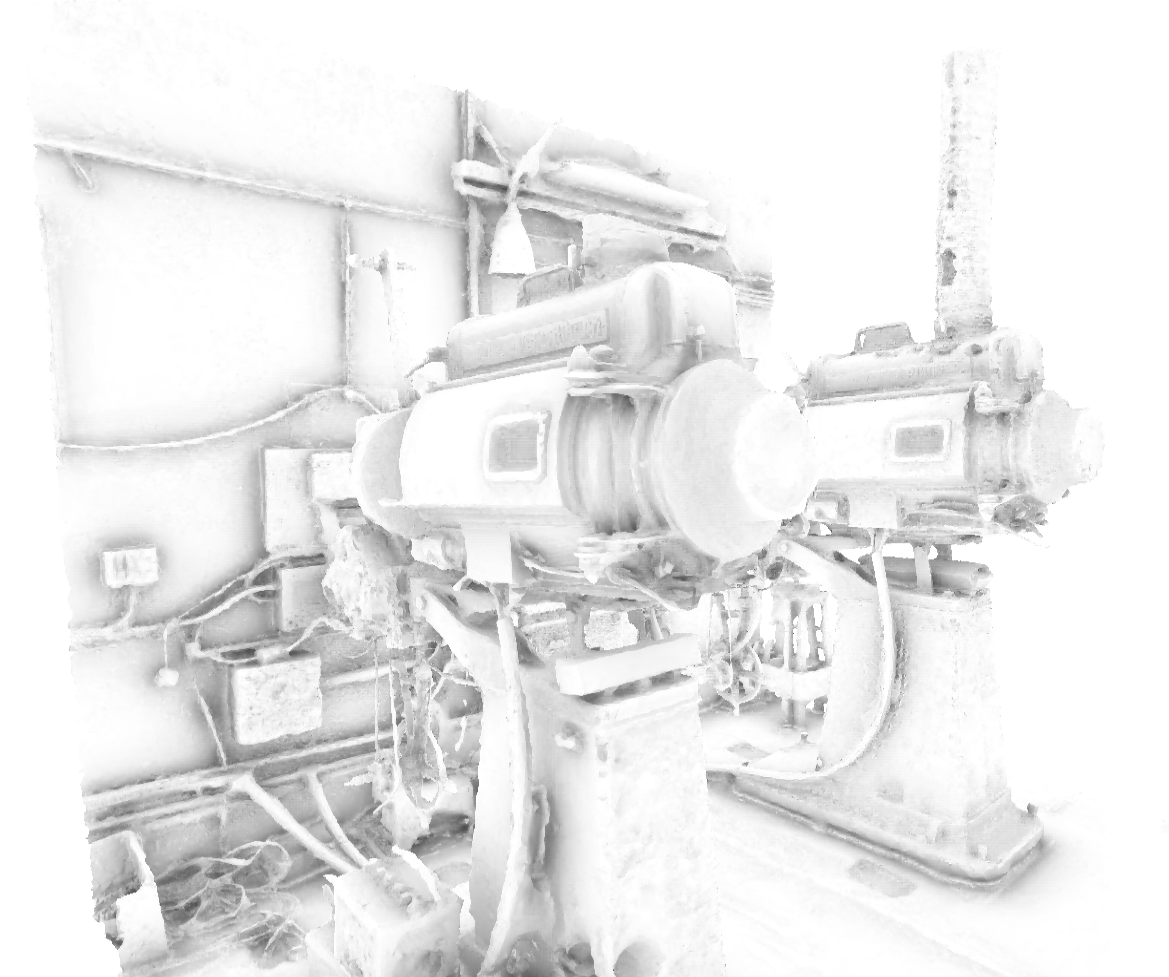This is an implementation of Ray Traced Ambient Occlusion (RTAO) using DXR. Code is based on a IntroToDXR Project by Adam Marrs - you should check it out for build instructions and code description.
RTAO is meant as a replacement for typical SSAO effects found in many rendering engines, and therefore is implemented in a similar way. It is executed as a post-processing effect in two passes, which are separate from the main geometry rendering pass:
- AO raytracing pass - uses normals and depth from main rendering pass to reconstruct world space position of visible pixels, and shoots AO rays in a normal-oriented hemisphere from there.
- Filtering pass - applies temporal filter (box filter) and spatial low-pass filter (gaussian blur) on a noisy result from previous pass
AO raytracing pass simply shoots selected number of AO rays, using directions from a pre-calculated sample-set. It uses basic temporal accumulation and filtering - AO is stored for a few previous frames in a cache. Cached values are first aligned with current frame using reverse reprojection (which requires motion vectors from a renderer). A filtering pass then applies a box filter on cached values, and a spatial filter to smooth out the results.
This is a basic implementation that can (and should) be improved! Try this:
- Calculate AO in a 'main pass' - if you're using ray tracing for primary rays, you can add secondary AO rays directly to it, avoiding the need to execute another pass specifically for AO - make sure however to use simple closest-hit shader for AO rays, that does not load any materials and uses simple payload structure (just the T distance).
- Implement downsampling - AO can be calculated in a lower resolution than main image. Make sure to execute filtering pass in full resolution to preserve sharpness on geometry edges (prevent unpleasant halo artifacts). Try adding dithering to the low-resolution result to reduce some of the "blockiness"
- Adaptive sampling - use less samples in a great distance or in dark image areas.
- Better sample-sets - find sample-sets that yield better visual results, take a look at interleaved sampling
- Better filtering approaches - both temporal and spatial filters can be adjusted and tuned for specific scenes - dynamic scenes may not like the temporal approaches, but movement will hide noise better.
- Adam Marrs: IntroToDXR https://github.com/acmarrs/IntroToDXR
- Chris Wyman, Shawn Hargreaves, Peter Shirley, Colin Barré-Brisebois: Introduction to DirectX RayTracing http://intro-to-dxr.cwyman.org/
- Daniel Scherzer, Lei Yang, Oliver Mattausch, Diego Nehab, Pedro V. Sander, Michael Wimmer, Elmar Eisemann: A Survey on Temporal Coherence Methods in Real-Time Rendering https://www.cg.tuwien.ac.at/research/publications/2011/scherzer2011c/scherzer2011c-pdf.pdf
- John Chapman: SSAO Tutorial http://john-chapman-graphics.blogspot.com/2013/01/ssao-tutorial.html
- Windows 10 v1809, "October 2018 Update" (RS5)
- Windows 10 SDK v1809 (10.0.17763.0). Download it here.
- Visual Studio 2017 or VS Code
-width [integer]specifies the width (in pixels) of the rendering window-height [integer]specifies the height(in pixels of the rendering window-model [path]specifies the file path to a OBJ model
The code uses three dependencies:
- TinyObjLoader, provided with an MIT license.
- stb_image.h, provided with an MIT license.
- dear imgui, provided with an MIT license.
The repository includes assets for use when testing the renderer:
- Statue Image, by Michael Gaida, licensed under a CC0 1.0 Creative Commons Universal Public Domain Dedication License.
- Peerless Magnarc Cinema Projectors, by Miguel Bandera, licensed under a Creative Commons Attribution 4.0 International License.
